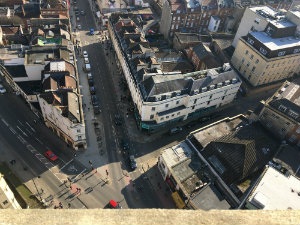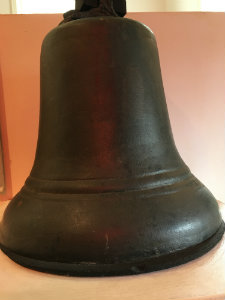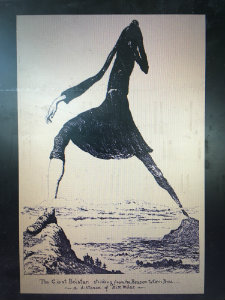The Bell

Named ’Great George’, the bell in the Wills Tower is, on one hand, the very embodiment of solidity and strength and a cultural object of high status and historical value, but on the other hand is just another synthesis of rock and iron that is worn by sun and wind and will tremble with vibration from natural forces. If you haven’t already been on the weekly Saturday tour, go, and see for yourself.
@GreatGeorgeWMB.

Bells have been important in Western and other cultures through the centuries – tolling for celebration, emergency and ritual. The importance of Great George was made clear to all passers by on a day in 1925 when all 9.5 tons of copper and tin (13 parts to 4 parts) was hauled up the 65.5 m (or 215 feet) tall Wills Tower to adorn the then newly built university buildings.

The oldest bell in Bristol is number 11 or C# in St Mary Radcliffe Church bell and was cast in 1622 by Roger Perdue. It was rung at the time of the Great Plague, the Great Fire of London and the English Civil War and has been peeling over Bristol ever since then.
In our discussions we talked about the sound heard in the air – the Eb from Great George and the 11th bell in St Mary Radcliffe. Those who have the memory of the sound of those two bells in Bristol must run to an incalculably huge number. In regards remembering sound, where sound is a memory, the imagination can take steps back into history. The bells of a city have a gravitas that comes from the collected memory of the listeners. In addition the material of the metal bell holds a history of the ground in its metal, how it was forged, where it was forged and by whom.

The Cornish Giant Bolster straddles only 6 miles, as illustrated by George Cruikshank. The sound of giant bell Great George when its’ clapper is used straddles a 12 mile radius (depending on the wind).